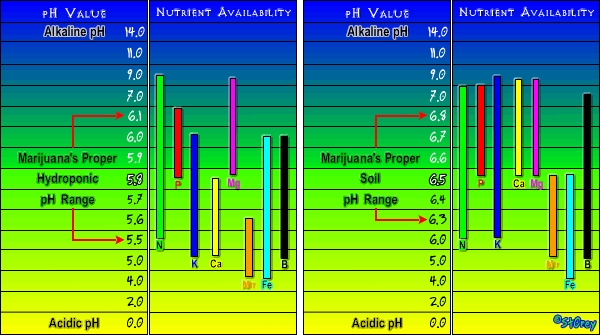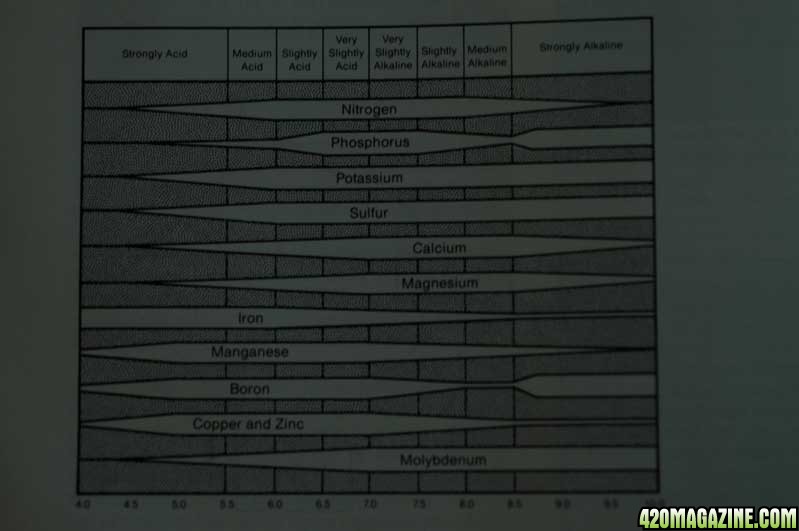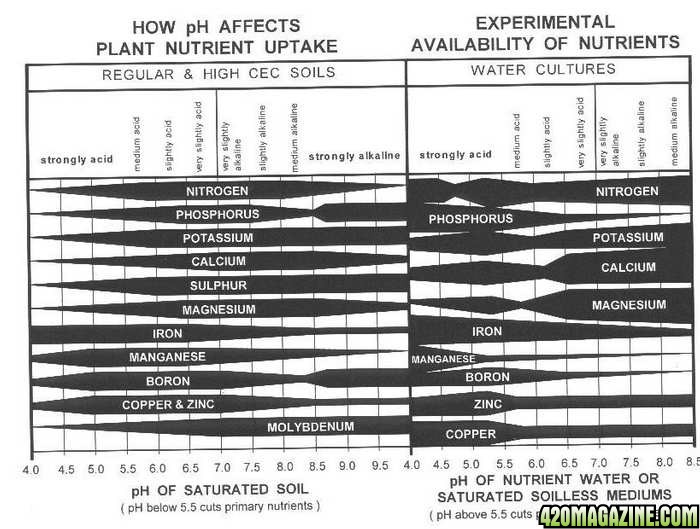Scientific
New Member
It's been a long time since I took organic chemistry, but I remember those organic acids (acetic in vinegar, citric in lemon) are pretty weak and they are also subject to breakdown by (and thus are food for) bacteria.
Theoretically, I would think the best acid to use to adjust pH would be phosphoric, because plants can use the phosphorus. (Phosphoric is what's in pH Down, by the way, though strangely it has citric as well.) I'm not sure that the sulfur products you're going to get with sulfuric acid are going to be ideal for plants... (but then you don't need much of it, so not a big deal, probably).
As for the pH drifting back up, I can't tell you exactly why, but I can tell you that some waters have buffering chemicals in them (carbonates, for example) that act as buffers, and what buffers do by definition is buffer (resist) changes in pH. So although I can't tell you the exact mechanism, I'm 99% sure that what is happening is that your water has carbonate buffers in it and that they are slowly reacting with the pH down and neutralizing it so when you come back the pH has gone back up. You can think about a piece of chalk sitting there getting dissolved by the acid but resisting the pH change that the acid would cause otherwise.
Buffers and buffering are kind of complicated, but that's the essence.
Here in the US, you can usually contact you water department and they will send you a complete breakdown of everything that's in your water. These days, that information is usually online, come to think of it. (It's important info not just for health and purity reasons but also because some industries (brewing for example) either need or cannot use water that has certain characteristics.) Anyway, if you can get a look at the characteristics of your local water, you might see that it is "hard" (high mineral content, essentially) and I believe that would tend to buffer pH changes. If you really want to pursue this, I'll bet a water chemist at your water utility could tell you exactly what's going on...
By contrast, the water where I live so clean, pure, and "soft" that you can make the pH drop dramatically just by blowing the CO2 in your breath through it (by producing carbonic acid). It changes pH very easily.
BTW, if you make careful measurements of water and acid, you should be able to use the same amount of acid each time if you give it enough time for the pH to stabilize. That at least gives you some predictability. You just need some lead time. (Though sometimes water characteristics change with the seasons. Sometimes the utility even draws water from different source.)
And of course you could just use RO or distilled water...
Maybe something in there was helpful? Good luck. I would be curious to know what you find out.
Sci
BTW, my grow guru loves and recommends Hydroguard bacillus culture to both treat and prevent water biology problems. Hydroguard gets really good ratings at Amazon. Also, as a rule, keeping your water at 70F or below (which also stops Legionella from growing, which can make you sick) or as cool as you can will help to prevent bacterial growth, and tank circulation helps too. The aquarium folks learned a long time ago to keep the water moving and to keep the bubblers bubbling.
Theoretically, I would think the best acid to use to adjust pH would be phosphoric, because plants can use the phosphorus. (Phosphoric is what's in pH Down, by the way, though strangely it has citric as well.) I'm not sure that the sulfur products you're going to get with sulfuric acid are going to be ideal for plants... (but then you don't need much of it, so not a big deal, probably).
As for the pH drifting back up, I can't tell you exactly why, but I can tell you that some waters have buffering chemicals in them (carbonates, for example) that act as buffers, and what buffers do by definition is buffer (resist) changes in pH. So although I can't tell you the exact mechanism, I'm 99% sure that what is happening is that your water has carbonate buffers in it and that they are slowly reacting with the pH down and neutralizing it so when you come back the pH has gone back up. You can think about a piece of chalk sitting there getting dissolved by the acid but resisting the pH change that the acid would cause otherwise.
Buffers and buffering are kind of complicated, but that's the essence.
Here in the US, you can usually contact you water department and they will send you a complete breakdown of everything that's in your water. These days, that information is usually online, come to think of it. (It's important info not just for health and purity reasons but also because some industries (brewing for example) either need or cannot use water that has certain characteristics.) Anyway, if you can get a look at the characteristics of your local water, you might see that it is "hard" (high mineral content, essentially) and I believe that would tend to buffer pH changes. If you really want to pursue this, I'll bet a water chemist at your water utility could tell you exactly what's going on...
By contrast, the water where I live so clean, pure, and "soft" that you can make the pH drop dramatically just by blowing the CO2 in your breath through it (by producing carbonic acid). It changes pH very easily.
BTW, if you make careful measurements of water and acid, you should be able to use the same amount of acid each time if you give it enough time for the pH to stabilize. That at least gives you some predictability. You just need some lead time. (Though sometimes water characteristics change with the seasons. Sometimes the utility even draws water from different source.)
And of course you could just use RO or distilled water...
Maybe something in there was helpful? Good luck. I would be curious to know what you find out.
Sci
BTW, my grow guru loves and recommends Hydroguard bacillus culture to both treat and prevent water biology problems. Hydroguard gets really good ratings at Amazon. Also, as a rule, keeping your water at 70F or below (which also stops Legionella from growing, which can make you sick) or as cool as you can will help to prevent bacterial growth, and tank circulation helps too. The aquarium folks learned a long time ago to keep the water moving and to keep the bubblers bubbling.





 Well then, use the 420magazine search function and search for "dwc, tea" which are the results I linked to.
Well then, use the 420magazine search function and search for "dwc, tea" which are the results I linked to.


